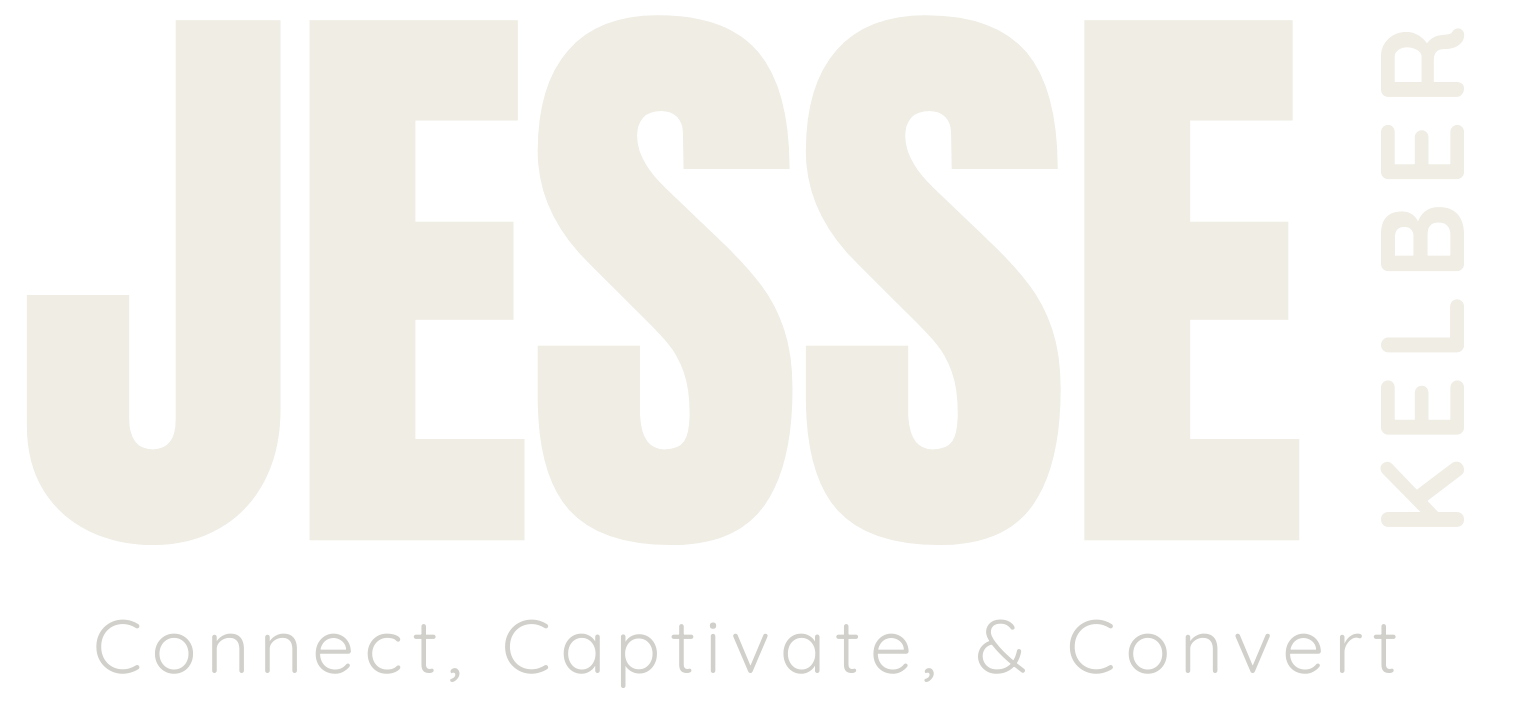Effective Blogging Strategies for SaaS Executives: 5 Things to Know

- August 26, 2024
Rumors of the death of blogging have been greatly exaggerated.
You can be forgiven for not having given much thought to a pastime many still view as something for angsty teens and influencer wannabes. What I’m here to do today is dispel that nasty rumor and ensure you leave with a clear understanding of just how powerful your words can be.
The B2B SaaS world moves fast. You probably didn’t need me to tell you that. What you do need me to tell you is that that doesn’t mean people don’t read. Humans are a species raised on narratives. From our earliest days on the Savannah, humans have told each other stories.
Stories about how we got here.
Stories about what we should and shouldn’t be doing here.
And even stories about how we should or shouldn’t treat each other while we’re here.
Swirling around in that mix of stories is the one about your company. It has an origin story where the founder had the spark of an idea. It has a middle, where the company comes together around a central mission (a sub-narrative, if you will) to create a thing that will change how people do what they do.
But who’s controlling that narrative?
Executive blogging (sometimes called Thought Leadership) was, is, and will remain a potent tool for communicating insights, establishing thought leadership credentials, and more broadly connecting with your audience of existing and potential customers. Blogging, whether on your corporate website, LinkedIn, or even Reddit provide a plethora of outlets for your words. Words that can sway public opinion. Words that can explain how a product can help with a particular pain point. And words that can help keep your narrative moving forward while showing the human side of SaaS leadership.
Here are my top five things to know when starting an executive blog. Please note: this is a living document (another benefit of blogging, right there), so remember to come back often to see what updates I’ve rolled out!
Know Your Why
The last thing I want anyone to do is start a blog because I said so. That’s the quickest way for a blog to fail, because you won’t have a ‘Why’ and I can’t give you one.
Therefore, the first thing you need to know about your blog is why you’re creating it.
Before you spend hours every week drafting up a compelling story to tell your rapt audience, you need to know why you’re doing it. Are you trying to help them solve an existing pain point? Convey updates about your product? Get something off your chest about the weather?
There’s another Why in play: why should your audience invest their precious time in reading your words? What are you giving them in exchange for the 10-15 minutes you’re asking them to take out of their day?
Blogging provides an opportunity to leverage a powerful communication channel. You have specific knowledge of your sector that your audience could potentially be using, right now, to help them power through or around a sticking point in their everyday lives. A blog can be your platform to build your reputation as a thought leader by sharing that knowledge. It can be a venue to influence tired industry narratives in need of overturning. It can be a way to foster direct connections with prospective customers and turn your existing clients into brand ambassadors.
But how you proceed will be heavily influenced by which of those is your goal.
Once you know why you’re starting this blog, it’s time to dive into the next, and potentially equally crucial piece of information: the who.
Know Your Who
As in, who do you want to read this blog?
- Industry insiders?
- Your existing client base?
- The list of potential customers your sales team is prospecting?
- D) All Of The Above?
Before you can write even one word of advice, or help with a single pain point, or tell one amusing anecdote from last weekend—you need to know who you’re talking to. Think of it this way, would you tell that story the same way if you were talking to your grandma as when you’re talking to your co-founder? Or the VC? Or your kids?
Every audience has it’s unique impact on how you weave your narrative, so starting with a deep understand of who you’re targeting is key.
If you’re going to write a guide to addressing a pain point you know your product can help with (a common goal of Content Marketing for many SaaS platforms), you need to be sure you haven’t been targeting other SaaS execs, because they probably don’t care.
On the other hand, if your blog is mostly about sharing your experiences in raising funds in today’s tight startup market, but you’ve been targeting those prospects…again, why would they care?
Before you ask, yes, it’s perfectly fine for a blog to target multiple segments of an audience, just be sure you’re using tags, titles, etc appropriately so your audience can find the content that will resonate with them. Which brings us to the next thing to know…How.
(I’ll be diving further into logistics like blog titles, categories, and the like in the future, so stay tuned if that’s something you’d like further guidance on.)
Know Your How
This one’s actually two-pronged. First you have to know how to write, duh. I’m glossing over that one for right now as it’s quite literally something I could write a book on (now there’s an idea…). For this intro piece I want to look at the How of posting your articles.
Are you blogging? For yourself, or your company? What about starting a newsletter? Or maybe you’re looking to elevate your personal brand and become known as a thought leader on LinkedIn? Wherever you intend to post these essays/articles/ramblings, there are a handful of things you’re going to want to be sure you don’t overlook, which in the interest of time I’ve kept to my top three:
SEO
I put this first because I know folks will be searching for it specifically, though in reality it should be last as it encompasses so many different aspects of writing online in 2024. SEO, or Search Engine Optimization (let’s be honest, it’s more like OFG, Optimize For Google) is the act (because I refuse to think of it as artful in any way) of tagging and labeling your writing so it’s more likely to be picked up by Google and ranked higher based on the terms people are searching for.
This includes everything from being sure to include your keywords in the title and several subheads, to remembering to use categories and tags if you’re posting to a blog you control. To back up: keywords can be individual words or short phrases that you want your piece to rank for when someone searches for them. Take this article, my research found that more people are searching for “Executive Blogging Strategy” than “B2B-” or “SaaS thought leadership,” hence the title. It’s also formatted with a colon for SEO purposes, Google loves how-to guides.
(Like with the last section, I’ll have heaps more to say on this, so be sure to subscribe so you don’t miss anything!)
Organization
Those tags and categories I mentioned above as impacting your post’s SEO? Yeah, they matter for way more than that. Have you ever visited a blog and been stumped by how you’re supposed to find anything since the main page is just a cork-board of random posts, or they’re in the default order of newest first? What if you’re looking for a specific topic you know they’re written about, but have no clue when it was?
Enter organization. If you’re starting your blog from scratch, you’re in the best position to set yourself up for success here, as you can create the categories and tags ahead of time so they’re ready to be added to each and every post you craft. Using this post as an example again—It’s in two categories: Executive Blogging and B2B Thought Leadership; and has multiple tags including SaaS blogging and ghostwriting.
(Yep, more to come, subscribe, blah, blah, blah…)
Navigation
And finally, dovetailing gracefully off the organization thoughts above we come to navigation. That last bit about being able to simply click a category or tag to see all relevant pieces? That’s not there by default in many blogging platforms. You have to know you want it and locate the appropriate settings to make it happen.
Know Your When
This guide is getting long, I know. Thank you for sticking with me, I promise these last two sections are just as important to getting yourself established as a thought leader with your writing as the others. This one hits from two angles simultaneously: Google loves sites that are updated regularly, and people love routines.
Another aspect of SEO not covered above is that Google elevates a site’s reliability (I think they call it ‘authority’ now) if fresh, authoritative (see, there it is) content is added on a regular cadence. So if two sites are vying for the lead when it comes to “Startup CISOs who know their beans,” and one site drops new articles every Tuesday at 8:00 am PST while the other sporadically drops 3-4 posts at a time, then sits dormant for months…you see where this is going.
And on the human psychology front, people love routines. So your audience probably has a set time every day where they go through their inbox looking for emails that need their attention. If you’re posting at the same time every week, and have enabled the ability to subscribe to your blog (or turned it into a newsletter), your audience may very well adjust their routine to enable them to read your posts when they’re fresh. And even if not, they’ll appreciate that you’ve taken the time to create an editorial calendar and are sticking to it, dropping those fresh, relevant pieces in their face every week so they can read up and stop fretting about their next meeting with the boss for 10 minutes.
Know Your Outcome
And finally, you need to know what the point of all this work is. What do you want the outcome to be? Are you vying for a coveted spot as the go-to person for all things B2B financial reporting software platforms? Do you want to send 10 fresh leads to your sales team every week? Maybe you just want to counter that one person from your graduating class who’s always flexing on LinkedIn.
Whatever your motivation, knowing what outcome you’re aiming for is our last key thing to know (for now…). And the reason this is so crucial is actually quite simple: if you don’t know what the point is, how will your readers?
It also matters because what metrics you track may vary wildly. Sales will want to know your blogs’ conversion rate, while for brand awareness and authority points on LinkedIn, it’s going to be ‘impressions’ you’ll be tracking most closely, along with comments of course.
There’s oh so much more to executive blogging than what I can cover in a blog post I’m trying desperately to keep under 2,000 words
So in closing—do you want to start blogging? Good on ya!
If this article left you with more questions than answers please let me know. I was hoping to provide a good starting point at the very least. And second, please ask those questions in the comments or reach out via the Contact page.
I’m always available for email chats and would love to hear from you if you want to dive deeper into this via coaching sessions—or even to hire me to handle it for you.

Jesse Kelber
Hi, I’m Jesse Kelber, a freelance writer based in Seattle, WA. I specialize in creating impactful content tailored to help you stand out and succeed in your industry.



2 Responses